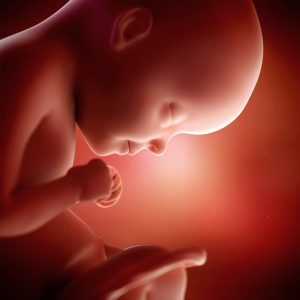
LifeDate Summer 2024 – Made For Life
by M. Roy Schwarz, M.D.
The American Heritage Dictionary, Second College Edition, defines “life” as “the property or quality that distinguishes living organisms from the dead or inanimate matter manifested in functions such as metabolism, growth, reproduction, and response to stimuli.” These four criteria can be used to judge whether some object is alive or dead.

Science has taught us that the process of human development begins when the male sperm penetrates the female egg. This triggers a series of events leading to division of the fertilized egg. Hence, a single cell divides into two cells, those cells divide into four, those cells divide into eight, and those cells divide into sixteen. This all occurs before the fertilized egg attaches to the wall of the uterus. By seven days, or when implantation begins, a significant cell mass has developed. At 10 days, the cell mass shows signs of differentiation as the cells become specific in their nature. At three weeks, the cardiac or heart muscle fibers may be seen that are capable of contracting. By six weeks, brain waves appear and, by eight weeks, the human form has appeared and organs are developing. By 15 weeks, fetal movement is evident and, by 24 weeks, the fetus is a viable person. By 36 weeks, we have a full term infant.
This process, from fertilization through delivery of the infant, is continuous, without interruptions. There are no stops and no pauses in the process. Once fertilization occurs, bio-chemical events are initiated that continue until a mature human being is formed.
So when does life begin? To answer that question, it is well to go back to the definition of life and use the four end points for judging if life exists. These include metabolism, growth, reproduction, and response to stimuli.
Immediately after penetration of the egg by the sperm, bio-chemical events start the process of development.
Thus, the metabolism end point has been met.
When the cells begin to divide, the growth criteria has been met. Third, when the cells are reproducing in the course of their division, the criteria required for reproduction is met. The fourth end point, response to stimuli, is a little more vague. It is clear, however, that any cell when confronted with a toxic stimulus will respond by changing the movement of its membrane.
Based on this analysis, one is led to the inexorable conclusion that life begins at the time the sperm penetrates the egg, and life continues until death.
Dr. M. Roy Schwarz served as a professor and administrator for more than 20 years at the University of Washington and the University of Colorado School of Medicine. He then was senior vice president of medical education and science for the American Medical Association. He is the author of more than 150 articles, books, and abstracts. He has also served as chairman of the North American Lutheran Seminary Board of Regents. (Source: NALC News – March 2024 | thenalc.org/newsletter)